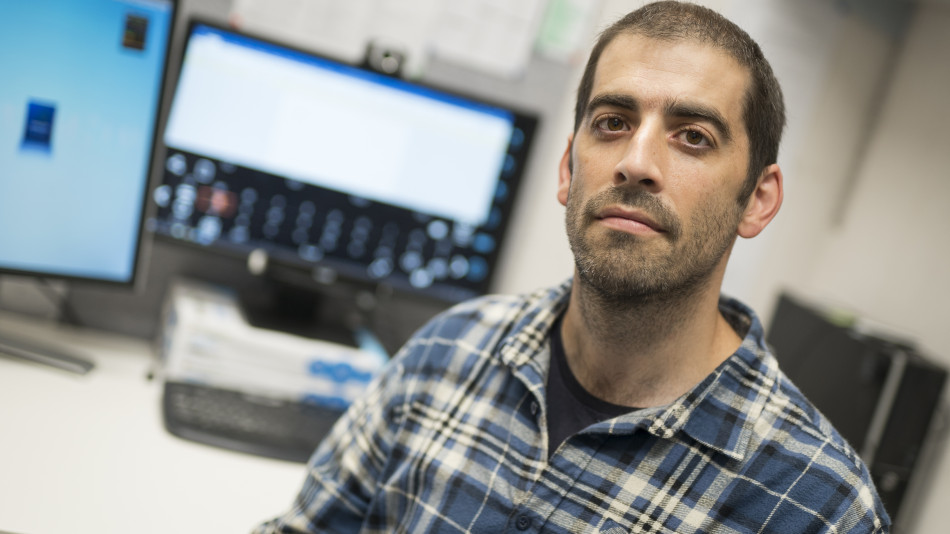David Rozado is interested in creating open-source accessibility software for users with motor impairment
A Senior Lecturer in Otago Polytechnic’s College of Enterprise and Development, David has been working with several students in Otago Polytechnic’s Bachelor of Information Technology programme, developing software aimed at helping people who are unable to control computers through traditional devices such as a mouse or the keyboard.
The solutions include facial gestures, voice prompts and eye movement.
“Due to the relatively small size of the severely motor-impaired community and the large fixed costs of developing accessibility software, commercial accessibility software solutions are often relatively expensive,” says David.
“Until recently, open-source accessibility software solutions have been relatively scarce and the existing ones do not match the range of commercial programs.
“We have leveraged capstone projects at our Bachelor of Information Technology (BIT) degree programme to guide students towards the creation of a range of open-source accessibility software solutions.”
The open-source nature of the projects allows skilled software developers to add features or improve existing functionality.
“The software is available through an online repository to anyone “regardless of financial circumstances”, David says.
“During 2017 the students and I refined and polished what had been done the previous year.
“In 2018 we are going to try to expand the software to control the home environment (e.g. television, lights, air conditioning) via an interface that expands our gaze control software.”
Examples of the applications created by Otago Polytechnic Bachelor of Information technology students:
Gaze Control Toolbar
This software allows the user to fully control a Windows computer using only their eyes and a low-cost eye tracker (less than NZ$150). The interaction is achieved using a two-step process by which the user selects a desired computer control task (e.g. left button mouse click, scrolling, etc) by gazing at a reactive taskbar on the border of the computer screen. The software also allows the user to augment the system via accessibility switches (e.g. to speed up interaction).
Icon-based Communicator
A gaze-reactive on-screen keyboard that allows motor-impaired users who cannot read or write to communicate with their eyes, using a hierarchy of gaze-aware semantic icons and a speech synthesizer.
FaceSwitch
FaceSwitch is an application that transforms predefined facial gestures to specific keyboard keystrokes. The program leverages a deformable face-tracker to create a multi-switch system driven by face gestures. FaceSwitch is intended to help computer users with limited mobility from the neck down but who have a good level of control of facial muscles by allowing those users to use facial gestures as on-off switches to control accessibility software.
For more information, visit https://accessibilitysoftwarehub.github.io

